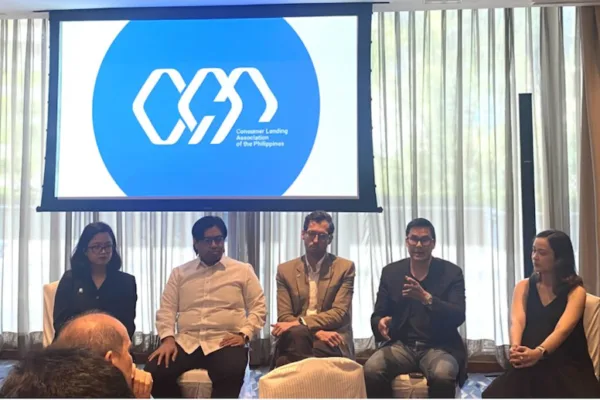As the Philippines rapidly embraces digital financial services, with over 50% of retail transactions now made through digital payments, a new and insidious threat looms: sophisticated AI-driven deepfake attacks. These highly advanced “digitally injected attacks,” including a notorious variant dubbed “Grey Nickel,” are outsmarting traditional identity verification systems, posing an existential threat to the digital transformation of banking.

Dominic Forrest, Chief Technology Officer at iProov
In an exclusive interview with FintechNewsPH, Dominic Forrest, Chief Technology Officer at iProov, a global leader in biometric authentication, revealed how these attacks bypass conventional Know Your Customer (KYC) systems, particularly those reliant on single-frame liveness or “selfie”-based verification. Forrest is responsible for iProov’s technology vision, strategy, and roadmap, which includes the design and development of its cloud-based infrastructure.
“The country’s mobile-first approach has created ideal conditions for sophisticated attacks like ‘Grey Nickel’ to thrive,” Forrest explained. “As more consumers are onboarded remotely via mobile devices, KYC systems have become a critical frontline defence. However, many existing systems struggle to keep pace with the speed and scale of digital onboarding, leaving vulnerabilities that advanced deepfake and injection attacks can exploit.”
The evolving landscape of AI-powered financial fraud

iProov’s investigation has identified several distinct criminal operations exacerbating this threat. “Grey Nickel,” a sophisticated threat actor group, has been systematically attacking identity verification systems since July 2023, primarily targeting organizations in the Asia-Pacific region, with recent expansions into North America and EMEA.
This group employs advanced face-swap technology, metadata manipulation, and injection techniques specifically designed to defeat single-frame liveness-based verification systems used by banks and payment platforms.
Beyond “Grey Nickel,” other criminal groups have developed Advanced Virtual Camera Networks through specialized mobile applications for both Android and iOS. These apps inject pre-recorded or manipulated video feeds during identity verification, with some variants even incorporating lip-syncing to defeat voice-based challenges.
Furthermore, Deepfake-as-a-Service Operations are on the rise, offering custom deepfake creation and comprehensive KYC bypass packages, often combining stolen identity databases with AI-generated media to create “synthetic identities” for large-scale identity fraud. Criminal forums are also actively sharing techniques using commercially available AI platforms to generate convincing deepfake videos, specifically designed to bypass primitive liveness technologies.
The financial impact of these AI-powered attacks is reaching unprecedented levels. In 2024, a Hong Kong employee of a British multinational company fell victim to deepfake scammers for a staggering US$25.6 million when criminals impersonated company executives. Moreover, a recent BioCatch Report indicated that more than half of the organizations surveyed admitted to losing between $5 million and $25 million to AI-powered attacks in 2023.
Beyond the selfie: Why traditional identity checks fail as AI fraud explodes

A United Nations report highlighted a more than 600% increase in mentions of deepfake-related content targeting criminal groups in Southeast Asia across monitored online platforms in the first half of 2024 alone.
Traditional “selfie” methods, Forrest elaborated, are inherently flawed. “These selfie-based methods rely on a single image and can’t verify whether a person is actually present at the time of authentication. They may detect presentation attacks, for example when someone is holding up a printed photo to the camera, but they struggle with more sophisticated threats.” This is precisely what “Grey Nickel” and similar operations exploit.
iProov’s answer to this escalating “AI arms race” is its unique Genuine Presence Assurance technology. “At iProov, we combine software with science to solve three key problems: is it the right person, is it a real person, and are they genuinely present right now?” Forrest stated. Beyond merely matching a face to an image, iProov’s system flashes a sequence of unpredictable colors on the user’s screen and analyzes how the light reflects off their face in real-time. This dynamic interaction is crucial.
What makes iProov’s technology “AI-resistant” is its continuous learning model. “Every time someone runs a session, they’re up against our machine learning models, each tuned to spot different types of attacks,” Forrest explained. Attackers only receive a “yes/pass” or “no/fail” response, providing no clues for iteration. Even if one model is briefly challenged, others quickly adapt and block the attack.
Further bolstering their defenses is iProov’s Security Operations Center (iSOC). “This is an arms race, and we fight AI with AI, staying many steps ahead so our customers don’t have to,” Forrest emphasized. The iSOC constantly monitors for new threats, tests and replicates attacks, and hardens defenses, benefiting from a global intelligence network that includes embedding personas in underground criminal forums to anticipate new attack vectors.
Prioritizing seamless user experience while revolutionizing identity verification

Beyond the technical prowess, iProov also focuses on practical implementation. Forrest highlighted that operational and experiential challenges often hinder new security tech adoption. “Some systems fall short not because the underlying technology is weak, but because user journeys are fragmented or too complex.” iProov addresses this by designing for accessibility and inclusivity, requiring users to simply look at the camera without exaggerated movements. Their deviceless approach allows authentication on any camera-equipped device, simplifying deployment and ensuring consistent security.
Looking ahead, Forrest sees the “next significant frontier” in digital identity and authentication as enabling trust at an even greater scale, particularly in high-security, fast-moving environments like borders and airports. This vision is already materializing, with iProov technology enabling US Customs and Border Protection at Orlando Airport to clear over ten people per minute per officer through facial biometric verification.
For Filipino financial institutions grappling with the acceleration of digital payments and the rise of “deepfake-as-a-service” operations, Forrest’s most critical advice is direct: “You need to be asking, ‘Is this person real, and are they physically here right now?'” He underscored that reliance on the human eye to detect fraud is obsolete, citing surveys where 99.9% of people failed to correctly identify a deepfake. The key lies in detecting behavioral and biometric anomalies that only advanced science-based biometrics can uncover.
A survey from Singapore’s Cyber Security Agency (CSA) had similar findings, with only one in four respondents able to distinguish between real and fake video content. That’s why the most important red flag isn’t something a human can spot — it’s behavioral and biometric anomalies that only advanced science-based biometrics can detect.
To strengthen identity assurance within KYC processes against these AI-driven attacks, Forrest recommends that organizations move beyond traditional liveness or device-bound solutions. “What’s needed is a shift toward biometric verification that confirms genuine presence and ensures not only that it’s the right person, but that they are physically there and real in that moment.”
iProov’s solution, with its deviceless and inclusive approach, aims to build trust at scale without compromising ease of use. The challenge is global, and criminal innovation is outpacing regulatory response, underscoring the urgent need for greater international cooperation and data sharing to combat these sophisticated threats effectively.








